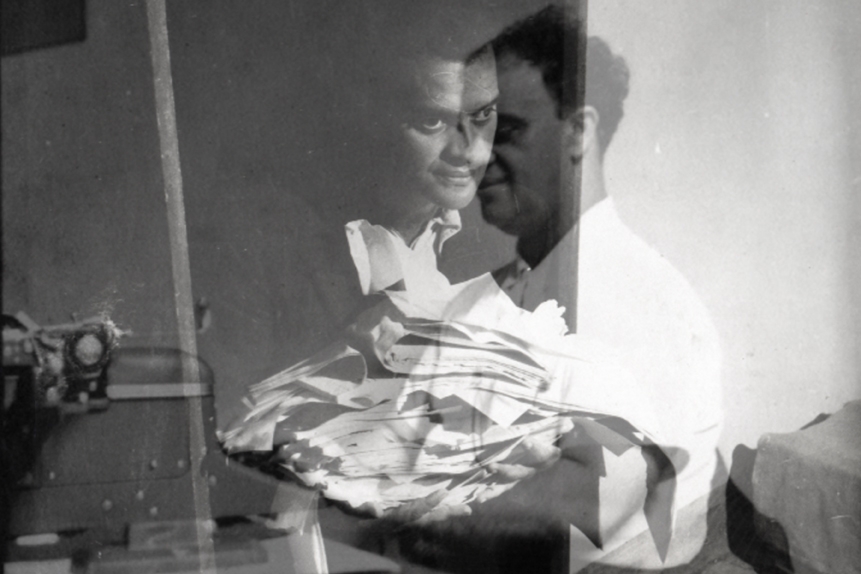Tamar Guimarães, a Brazilian-born artist based in Copenhagen, appropriates and reconfigures side stories and leftovers through intimate gatherings, collective readings, small-scale public talks and film screenings. In tandem with her source material, the resulting works are invariably presented in near-obsolete media such as slides, acetate or film. Guimarães’s film A Man Called Love (2008) relates the story of Chico Xavier, a psychic writer famed in Brazil during the country’s military dictatorship (1964–85). As a medium who wrote books dictated to him from the spirit world, his visions of cities in the world beyond, and the working structures therein, contained within them a form of large-scale urban and social planning that was both utopian and conservative.
Guimarães’s work proposes time as space: historical narratives as rooms from which one can speculate on the present. Rather than attempting a recovery or reconstruction of the past, perhaps with alternative ends or critical views a posteriori, what interests her is how artefacts and ideologies travel through time – how they change, corrode, become opaque, take on new meanings, are misunderstood or are perhaps understood again, anew. Put another way, hers are attempts to create composite images that allude to the continuity of the present’s desires with the desires and foibles of the past.
Guimarães takes up the position of the amateur: a role that, referring to the enlarging of the artist’s profession to become a dealer of several domains – attempting to master the ebbing and flowing between the social, symbolic and economic capital associated with art production (and the concomitant necessity of speculating on the artist-as-persona, and the progression towards turning oneself into a work of art) – is somehow prescient of contemporary notions of the multifaceted artist. Her attitude is at heart political, subtly questioning dominant discourse and writing by reframing fragments through a process that generates poetic tales, but never overloaded political statements; indeed, it is in the dimensions of transient micro-communities and minor public events that she manages to create magic.
This article originally appeared in the March 2012 issue.
